Is your cat shedding? If it's shedding, don't worry. This phenomenon, which usually occurs in spring and autumn, is completely natural for our little friends. On the other hand, if your cat is shedding a lot of hair - abnormally (in clumps, scratching, holes appearing) - this may indicate a behavioural or health problem. Let's take stock.
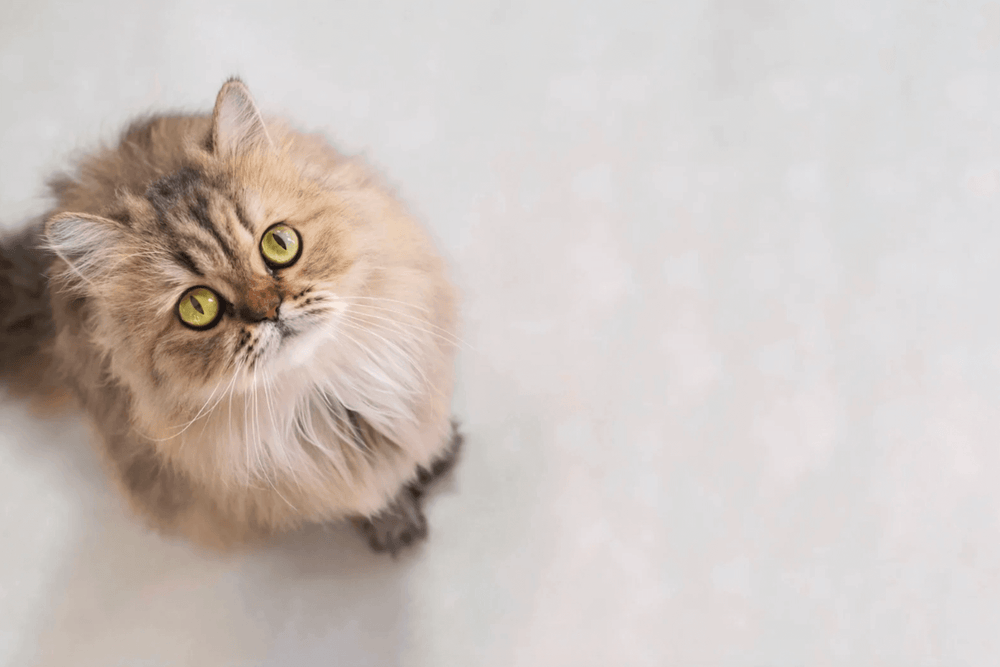
Why is my cat losing hair?
We love our cats like full-fledged members of our family. But they have one very big flaw: they shed their hair! On the couch, on the bed, on our clothes… We find it everywhere. And let's be honest, using the adhesive roller every five seconds is not the most pleasant activity. Only Sphynx owners don't have this hairy problem: the lucky ones 😸
All cats (or almost) lose their hair. There is no escaping it. But sometimes our cats lose more hair than usual. A significant loss that can be explained by a multitude of reasons.
Moulting: a natural hair loss in cats
Just like our hair, cat hair has a life cycle: it grows, dies and falls out, and this phenomenon is particularly accentuated during the moulting period , a natural phenomenon that generally occurs in autumn and spring. During these periods, the cat's coat is renewed.
Before the cold season, the cat adorns itself in a way with its winter fur. And before the warm season, it gets rid of its winter fur to sport a summer fur, much less dense and lighter. But make no mistake, moulting is not triggered by the change in temperatures. On the contrary, it is caused by daylight. This explains why moulting in cats living exclusively in apartments is a little less marked.
If your cat is shedding during the moulting season, this is completely normal. You don't have to worry about it.
To avoid having hair all over your home (and on you), remember to brush your cat regularly with a suitable brush, especially if your cat has long hair. This brushing will be all the more important for your cat who, when grooming himself, swallows a lot of hair. The hair is stored in his stomach and forms hairballs , clumps called “trichobezoars”. When these are too large, the cat can no longer eliminate them and vomits them. They can also present a risk of intestinal obstruction.
At Ziggy, we have created THE brush we dreamed of for our felines. A double-headed cat brush : one side with balled steel pins to gently detangle and massage, and one side with nylon pins to soften and shine. Suitable for both short and long hair, it is made of ash wood from sustainably managed forests, vegan and made in France in the Oise. French to the tips of the hairs!
Regurgitation in cats is not to be taken lightly. In addition to hairballs, they can be a sign of other pathologies: a gastric ulcer, kidney disease, etc.
Causes des pertes de poils chez le chat
Si votre chat perd ses poils ne manière anormale, hors des périodes de mue, il peut y avoir un problème sous-jacent.
Poor diet
Healthy hair comes from a healthy, balanced and quality diet.
If your cat is shedding a lot, it is likely that his diet is not meeting his nutritional needs. In particular, he may have a protein deficiency. In cats, the skin and hair are largely made up of protein: about 90% of the hair is made up of it (keratin).
So choose a food rich in protein. But pay attention to the quality. Some industrial cat food and kibble may have a high protein content, but these are not always qualitative. Very often, we find not muscle but reconstituted meat (mixture of vegetable and animal proteins) or mixtures of poor quality pieces, without much nutritional interest.
To find out more, don't hesitate to read our article on proteins in your cat's diet.
A sufficient supply of fatty acids is also important for a healthy coat. Omega 3 and 6 in particular play a fundamental role in the normal functioning of the cat's skin: a diet rich in linoleic acid increases the shine of the hair and the quality of the coat. Other essential nutrients include minerals, vitamins A, E and B vitamins and trace elements (copper, zinc, manganese, selenium, iodine).
To learn more, do not hesitate to consult our article dedicated to this subject. We share with you our dietary advice so that your cat has a beautiful coat .
At Ziggy, all our cat food provides a perfect quantity and quality of these nutrients. Just saying, just saying 😺
In addition to deficiencies, which can also be the cause of greasy fur , your little cat may also suffer from a food allergy characterized by intense itching and the appearance of red patches. Just like humans, our cats can also have allergies, which can sometimes appear suddenly. In this case, consult your veterinarian so that he can detect if it is indeed an allergy (and which one) or if it is another health problem.
Excessive and prolonged hair loss, accompanied by abnormal symptoms (itching, pimples, scabs, appearance of plaques) can in fact be a sign of an infection or a behavioral disorder in your cat.
Parasites, a common cause of hair loss in cats
When a cat loses its hair profusely (to the point of leaving its skin visible), it is called alopecia, also called “alopecia” and “depilation”. Alopecia in cats can be explained by a parasitic infection such as ringworm and mange.
Ringworm in cats is a skin disease (mycosis). It is caused by the presence of small fungi such as Microsporum canis and Ticrophyton mentagrophytes, which settle on the surface of the epidermis and between the hairs. These cause significant hair loss, particularly on the back and head. In particular, holes and, in some cases, lesions and scabs can be seen in the cat's coat.
Mange in cats is also a skin disease. But unlike ringworm, it is caused by mites that lodge in the cat's hair and skin. Mange causes intense itching and significant skin irritation, located in the ears (ear mange) or all over the body (body mange). The cat scratches a lot on the affected area, which causes significant hair loss.
Ringworm and mange are highly contagious diseases, both for cats and humans. If you suspect one of these infections, consult your veterinarian quickly so that he can prescribe the appropriate treatment.
Another possibility: fleas. These can cause flea allergy dermatitis (flea bite allergy dermatitis). When a cat is infested, it scratches itself until it loses large tufts of hair. Some skin lesions can also appear. This intense itching is caused by the saliva of the fleas, which, when biting the cat, inject this substance. The affected areas are often the lower back, stomach and inner thighs of the cat. Here too, it is advisable to consult your veterinarian.
Even cats that live exclusively in apartments cannot escape these parasites! Remember to deworm your cat 2 to 4 times a year.
An allergy
As we have seen, a food allergy or flea bite allergy can be the cause of significant hair loss in cats. But other allergies must also be taken into account.
Some cats can also develop an allergy to dust or pollen. Yes, as cute as they are, our little companions have very fragile health. Like us, they can be bothered by dust and pollen. Except that here, they don't sneeze, they lose their hair.
Stress and anxiety
A behavioral disorder can also be the cause of hair loss. A stressed and anxious cat will lick itself compulsively to the point of developing alopecia. There are many causes of stress: moving, a visit to the vet, the arrival of a child or a new animal in the family. Even a change in the color of the curtains can disturb it. There are several tips to help your cat relax : petting it, playing music (yes, it works!) or using valerian.
Abnormal hair loss in cats can therefore have different causes. In any case, consult your veterinarian. And when everything is back to normal, you will be able to give him lots of furry kisses again!
To learn more about your cat's coat, don't hesitate to consult our article: what can I do to make my cat have beautiful fur?
Comment prendre soin du poil de son chat ?
Si aucune infection ou cause allergène n’est avérée, voici quelques astuces pour prendre soin des poils de votre chat.
Offrir à son chat une alimentation de qualité
Pour prendre soin du poil de votre chat (et de sa santé au global), faites le choix d’une alimentation pour chat riche en protéines de qualité et en acides gras essentiels.
Chez Ziggy, toutes nos pâtées pour chats apportent une parfaite quantité et qualité de ces nutriments. Nous proposons également l'Oméga Boost, une huile de poissons pour chat, concentrée en EPA et DHA (Oméga 4).
L’Oméga Boost grâce à sa teneur en EPA & DHA de haute qualité contribue à améliorer la qualité et la beauté du pelage et participe à une peau saine et protectrice. Les EPA & DHA contribuent à réduire la production et la libération de stimulateurs inflammatoires. Précurseurs de prostaglandines particulières, ils contribuent à améliorer la peau sèche et les pellicules et à sublimer le pelage du chat.
Brosser son poilu !
Pensez à brosser régulièrement votre chat avec une brosse adaptée, surtout si votre chat a le poil long. Ce brossage sera d’autant plus important pour votre chat qui, lors de sa toilette, avale beaucoup de poils. Les poils se stockent dans son estomac et forment des boules de poils, des amas appelés “trichobézoards”. Lorsque celles-ci sont trop importantes, le chat n’arrive plus à les éliminer, et les vomit. Elles peuvent aussi présenter un risque d’occlusion intestinale.
Chez Ziggy, on a créé LA brosse dont on rêvait pour nos félins. Une brosse pour chats double tête : une face avec picots en acier boulés pour démêler et masser en douceur, et une face avec picots en nylon pour adoucir et faire briller. Adaptée aux poils courts comme aux poils longs, elle est en bois de frêne issu de forêts gérées durablement, vegan et fabriquée en France dans l'Oise. Française jusqu'au bout des poils !
Les régurgitations chez le chat ne sont pas à prendre à la légère. Outre les boules de poils, elles peuvent être le signe d’autres pathologies : un ulcère gastrique, une maladie rénale, etc.
Moins de stress pour son chat
Les causes du stress chez nos chats sont nombreuses : un déménagement, une visite chez le vétérinaire, l’arrivée d’un enfant ou d’un nouvel animal dans la famille. Même un changement de couleur des rideaux peut le perturber.
Pour détresser votre chat, il existe plusieurs astuces pour aider votre chat à se détendre : lui faire des papouilles, lui mettre de la musique (si, si, ça marche !) ou encore utiliser de la valériane.
Dans tous les cas, consultez votre vétérinaire. Et lorsque tout rentrera dans l’ordre, vous pourrez de nouveau lui faire plein de bisous… poilus !
Pour en savoir plus sur le pelage de votre chat, n'hésitez pas non plus à consulter notre article : que faire pour que mon chat ait un beau poil ?


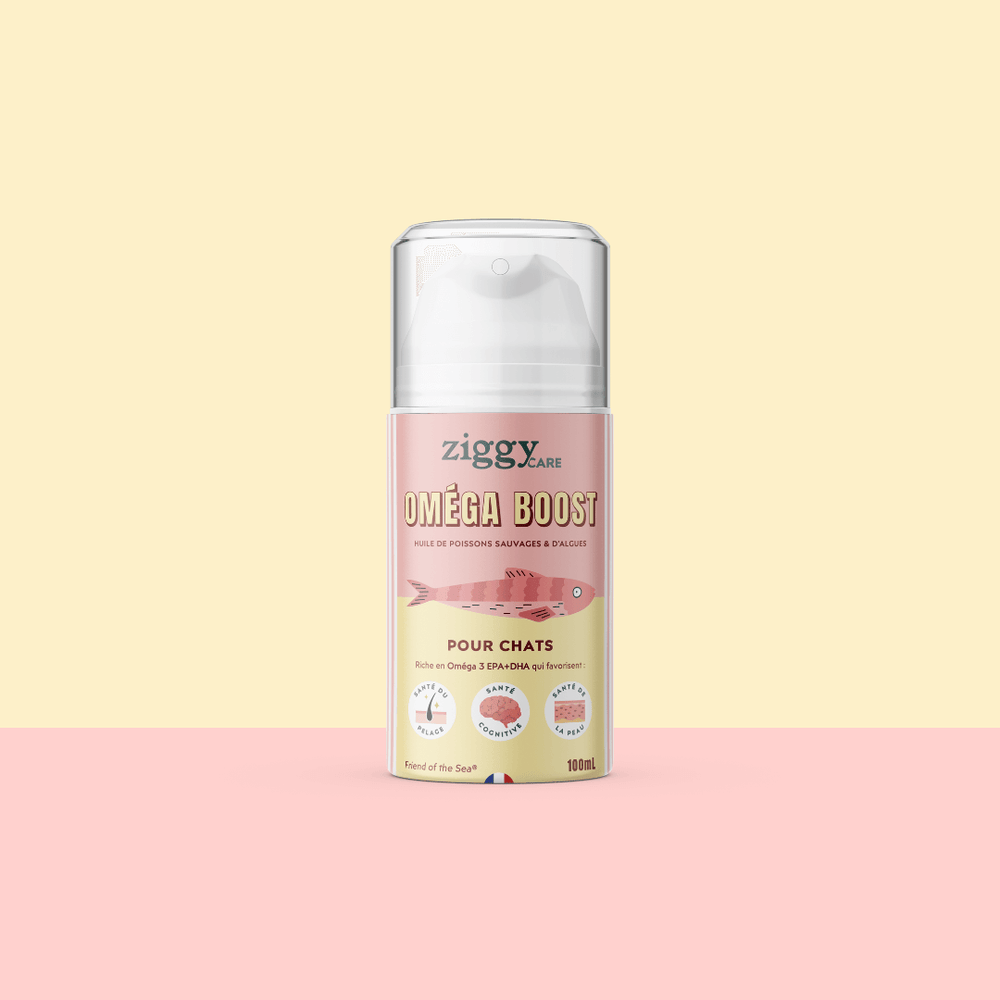
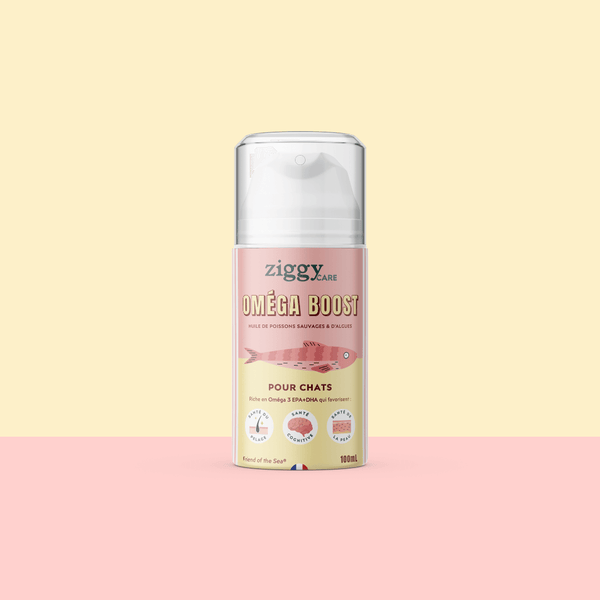
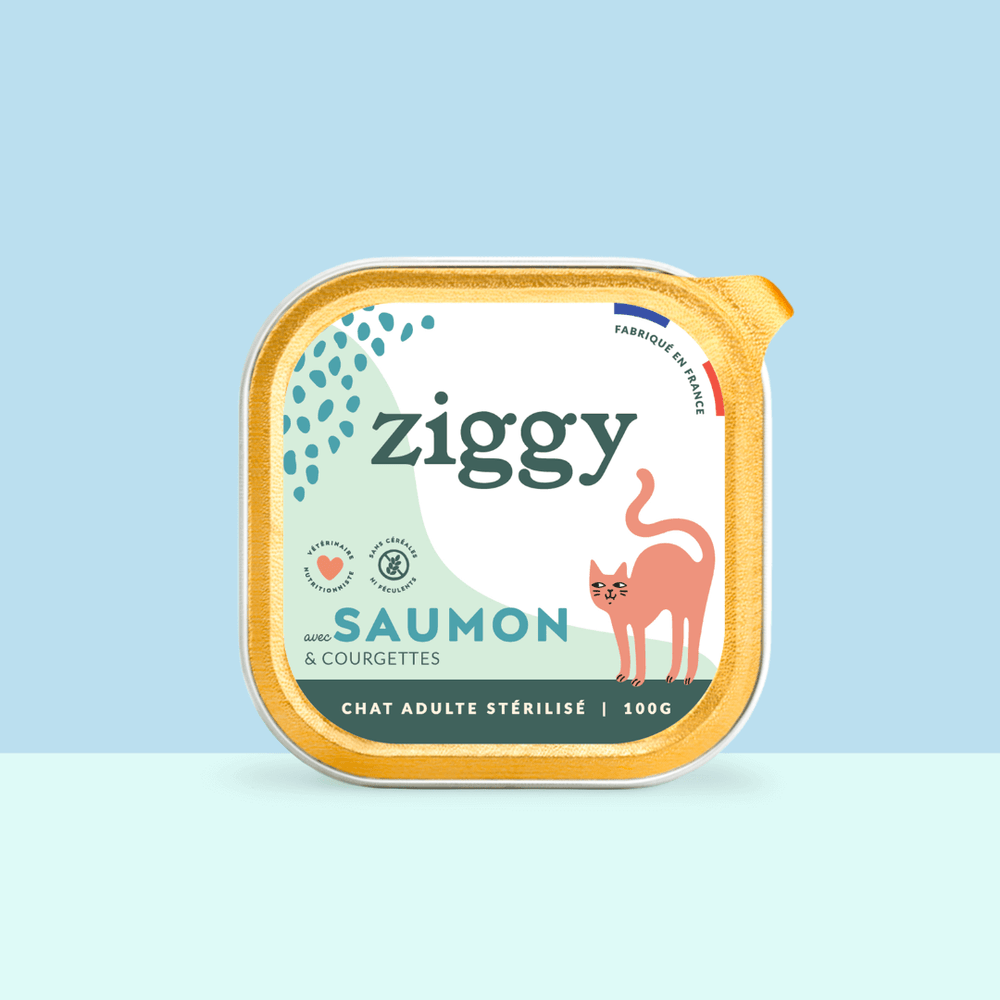
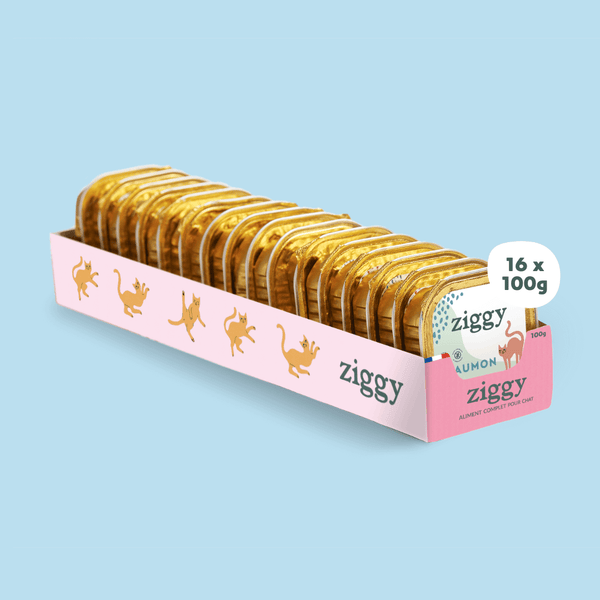
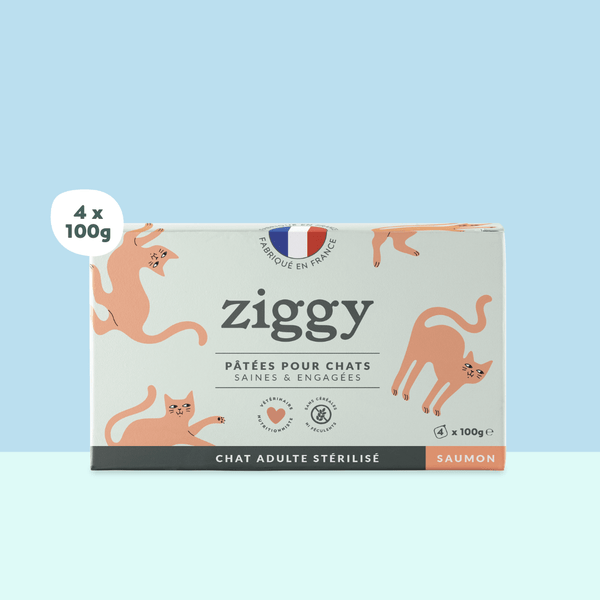
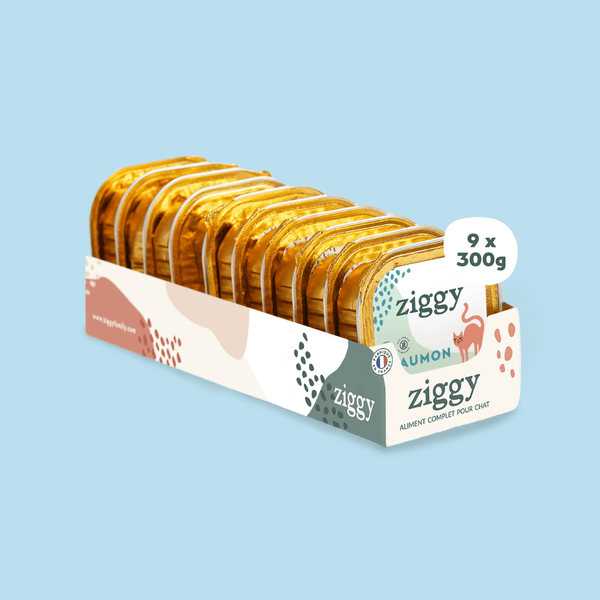


Bonjour Jean,
Merci pour votre commentaire ♥️
Je suis Marine de l’équipe Ziggy. J’ai eu le même problème que vous avec ma petite minette Ineka (adoptée à la SPA). J’ai testé plusieurs brosses, jusqu’à en trouver une qui ne lui fasse pas peur. Elle avait une peur panique du gant, n’aimait pas les peignes et les brosses trop “piquantes” (sans doute que ça lui faisait mal). J’ai commencé par une zone pour l’habituer, puis, petit à petit, sur d’autres zones. Avec la bonne brosse et un peu de patience, votre petite louloute se laissera brosser. Tenez-moi au courant 😻.
bonjour, mon chat va bien et adore vous patées et croquettes, mais elle ne veut pas que je la tienne pour la brosser elle refuse que je l’attrappe. Cependant elle est très caline, elle vient sur mes genoux de temps en temps et aime se faire caresser mais pas brosser. Alors , beaucoup de poils dans l’appartement, et surtout elle vomit de temps en temps. C’est une petite chatte trouvée dans la rue, donc je ne sais pas ce qu’elle a vécu. Si vous avez une solution je vous en remercierais beaucoup.
Leave a comment